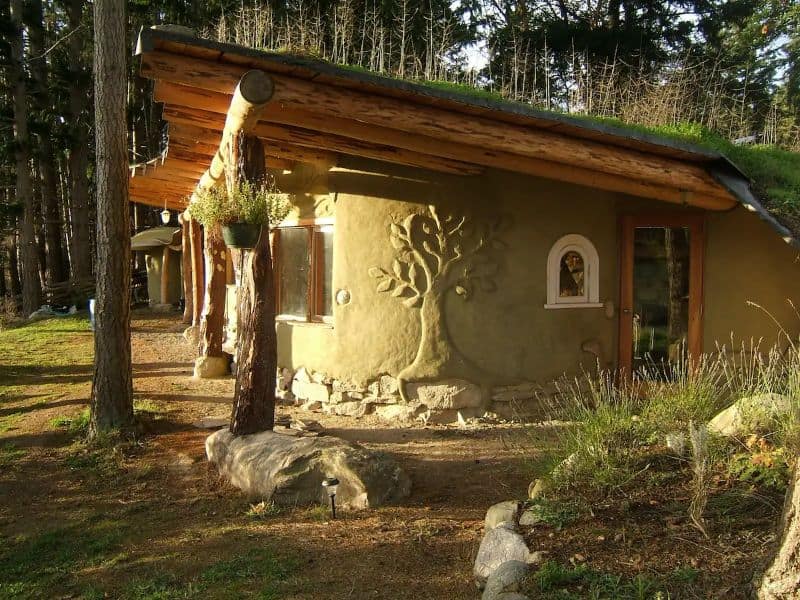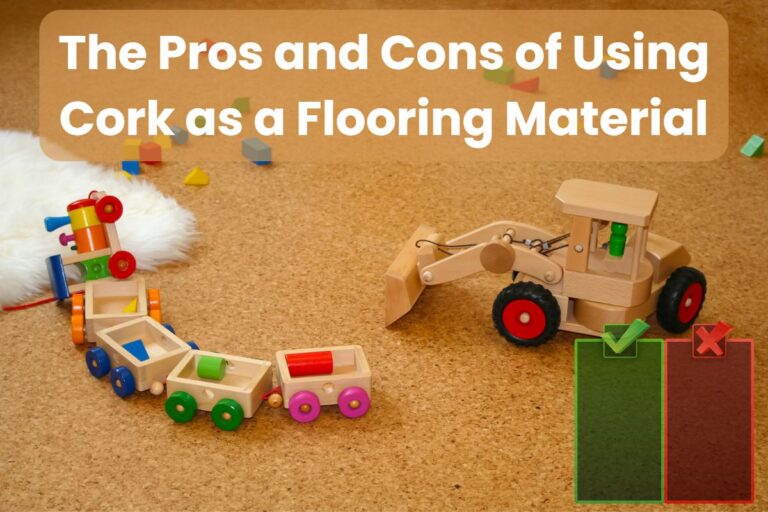Cob House Maintenance: Tips to Keep Cob in Good Condition

Picture this; you’ve spent months building your dream cob house – carefully crafting each wall by hand using clay, sand, and straw. It’s a labor of love, a beautiful, sustainable, and eco-friendly work of art.
However, after some time, you start noticing some problems like cracks and defects. This is where cob house maintenance comes in handy.
As with any home, cob houses are susceptible to wear and tear. Unfortunately, most people rely on modern cementitious plaster, renders, and masonry paints to fix cracks and defects in their cob houses.
Although these renders keep off driving rain, they’re impermeable and can cause the cob walls to become damp by trapping moisture. Remember, more than 12% moisture in cob walls causes structural problems – you don’t want to encounter that!
In this article, I’ll discuss a few cob house maintenance tips to keep your house in top shape. These tips not only prevent moisture accumulation but also fix cracks that have formed.
From plastering internal cob walls to fixing into cob walls, you’ll learn all the maintenance tips to keep cob in good condition for years on end.
Common Cob House Problems
Before proceeding to cob house maintenance, it’s important to discuss the common problems you need to look out for.
Knowing what to look for and how to solve cob house problems can help prevent costly repairs in the future.
The common problems with cob houses include:
Moisture Accumulation

While water is essential for life, it’s one of the main enemies of earthen building materials like cob.
Cob is a porous material that absorbs moisture easily. Luckily, its porous nature facilitates the dissipation of excessive moisture to keep the level below 12%.
The problem comes when impermeable renders cover the cob walls. They trap moisture and prevent it from dissipating and drying to the required 1-3% threshold by weight.
Moisture accumulation leads to cob walls with damp patches. Such walls are likely to fail due to their weakened stability.
Structural Stability
Cob walls can be prone to cracking if not properly designed and constructed.
Usually, cracks in cob walls develop due to movement on shallow foundations.
Besides wall movements, vibrations caused by nearby traffic, poorly compacted soil, and frost heaving contribute to cob wall cracking. These cracks can arise because there is relatively little intrinsic cohesion in cob compared to other building materials.
Pests
Cob walls are also prone to pest infestation, especially termites.
Termites thrive in moist and humid environments. Hence they’re attracted to cob walls with excessive moisture trapped on the surface or interior.
Small rodents and bees can also burrow into the walls, weakening them.
Pest infestation is a major problem that can cause massive destruction to your cob house if not dealt with in time. The burrows create tiny channels or pathways for moisture penetration that eventually cause weak walls.
Cob House Maintenance Tips
Now that you know what to look out for, here are some cob house maintenance tips to keep your dream home in top shape:
Apply Breathable Finishes

A breathable finish is a coating and plaster designed to be permeable. It’s applied on the external surfaces of the cob walls and allows moisture from the interior walls to escape.
A breathable wall extracts moisture from the air and then releases it without causing damp patches that are a recipe for mold and structural instability.
Rendering your cob walls with an earthen or lime plaster will keep them in top shape for years. Besides being breathable, these plasters are flexible and will prevent cracking.
Lime rendering is the most preferred approach because lime is more resilient and requires less maintenance. Moreover, since lime renders re-calcify, they create a stronger bond with cob walls over time.
Repair Cracks and Defects Promptly
More often than not, cracks appear in the walls and corners of cob structures due to the following:
- Insufficient tie across the trusses in timber frames.
- Differential movement due to subsidence.
- Poor foundations leading to the shifting of the stone foundation plinth.
- Rotten timber lintels or changing stress loads around the windows and doors.
As soon as you spot a crack or defect on the cob wall, repair it immediately to avoid further damage that’ll lead to structural failure.
Unlike stone and brick walls made of mortar joints, cob walls are homogenous and formed en masse. As such, cob walls require a different approach to structural repair.
Although there are cases where cracks in cob walls have been repaired with masonry bedded in cement mortar and concealed under a hard cement render, the move is not advisable because cement is impermeable. Going that route is a recipe for moisture accumulation.
With that in mind, you’ll be wondering how to repair cracks in cob walls.
Well, when it comes to repairing cracks in cob walls, you want to go with an option that:
- Has the same porosity and density as the existing structure. This is key to ensuring that the moisture moves in the same way.
- Has the same compressive strength as the original cob to withstand general movement without detachments.
- Will not introduce hot or cold spots within the walls.
- Is pre-dried to prevent shrinking away from the adjoining surfaces.
That said, cob bricks/blocks are the best options to stitch cracks in cob walls. Cob blocks/bricks offer a high degree of flexibility and easy handling.

Here is the procedure to stitch cob wall cracks using cob blocks or bricks:
- Preparation: Start by bedding the blocks on a flat surface as much as possible. Pair back damaged and unsound cob in the adjoining surfaces to ensure everything fits neatly.
- Dampen the area: Dampening the cracked area is crucial to ensure that the blocks and existing cob adhere to each other when pressed together. It involves applying a light spray of clean water on the surfaces of the adjoining cob and the bricks.
- Apply a bedding mortar: A bedding mortar is a paste formed by a mixture of cob/earth and sand. Place the bedding mortar to an approximate one-inch thickness to spread the load evenly onto the block and increase its tensile and shear strength. Bedding mortar should be applied on the top of the block and the exposed surface of the cob next to it.
- Press in blocks: The cob brick should fit naturally into place; if not, use a hammer or mallet to tap it in gently. Once in place, give them a gentle rub with a hand trowel for a pleasing finish.
- Plastering: After pressing, allow the repair to cure for at least seven days before plastering the walls with an earthen or lime render for a waterproof seal.
If the cracks are smaller, you can ram stabilized cob back-fill or cob plaster over them without the need for blocks.
In cases of extreme structural damage, you should consult a professional engineer specializing in cob wall repair and restoration.
Check the Foundation Regularly
Your cob house’s foundation is one of the most important parts to maintain. Shallow foundations are more prone to movement; hence, you must give them extra attention.
Regularly check for cracks, cavities, and structural shifts in the foundations. If you find any, address the issue immediately to prevent further damage.
Moreover, ensure the foundation stem wall is as high as possible. A rule of thumb is to go for about a foot or foot and a half up off the ground. Such a foundation stem wall will protect your cob walls from moisture, erosion, and pests.
Add Overhangs on the Roofs

Roof overhangs are essential to protect your cob house from the weather.
A roof overhang helps keep rainwater off your cob walls, preventing moisture damage and erosion.
In addition to that, an overhang will give your cob house a more aesthetic look – like a crown protecting it from the harsh environment.
The overhangs should be at least two feet (61 cm) past your home’s siding.
How Long Do Cob Houses Last
Cob houses are built to last a lifetime. There are cob houses that have been in existence for more than 10,000 years. However, this is with proper maintenance and care, especially protection from water.
Final Thoughts
Cob house maintenance is a must for longevity and aesthetic appeal. The key is to be proactive by regularly checking for cracks and defects.
Ensure to repair any crack as soon as possible before it widens to cause structural instability.
Besides plastering, painting cob walls can also help keep moisture away.
Now that you know how to maintain your cob house, check out this guide to installing an engineered wood floor.







